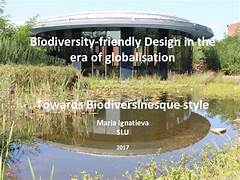Innovative sustainable design practices in architecture focus on minimizing environmental impact and promoting energy efficiency.
Here are some key practices:
1.Green Roofs and Living Walls: Incorporate vegetation into building designs to enhance insulation, reduce heat absorption, and improve air quality.
2.Passive Solar Design: Utilize natural light and heat through strategic placement of windows and building orientation to reduce reliance on artificial heating and cooling systems.
3.High-Performance Building Materials: Use materials with superior insulating properties, such as advanced glazing systems, thermal mass materials, and low-emission finishes, to improve energy efficiency.
4.Rainwater Harvesting Systems: Collect and use rainwater for irrigation, flushing toilets, or even drinking, reducing the demand on municipal water supplies.
5.Energy-Efficient HVAC Systems: Implement systems like geothermal heating and cooling, and smart thermostats to optimize energy use and enhance comfort.Solar Power Integration: Incorporate solar panels and photovoltaic systems into building designs to generate renewable energy on-site.
6.Biodiversity-Friendly Design: Create habitats and green spaces that support local flora and fauna, contributing to ecological balance.Zero-Waste Construction: Adopt practices that minimize waste during construction and renovation, including recycling and reusing materials.
7.Smart Building Technologies: Implement IoT (Internet of Things) devices and building management systems to monitor and control energy use, lighting, and climate efficiently.
8.Net-Zero Energy Buildings: Design buildings that produce as much energy as they consume over a year, typically through a combination of renewable energy sources and high energy efficiency measures.
These practices not only contribute to environmental sustainability but also enhance the overall quality and resilience of buildings.















0 Comments